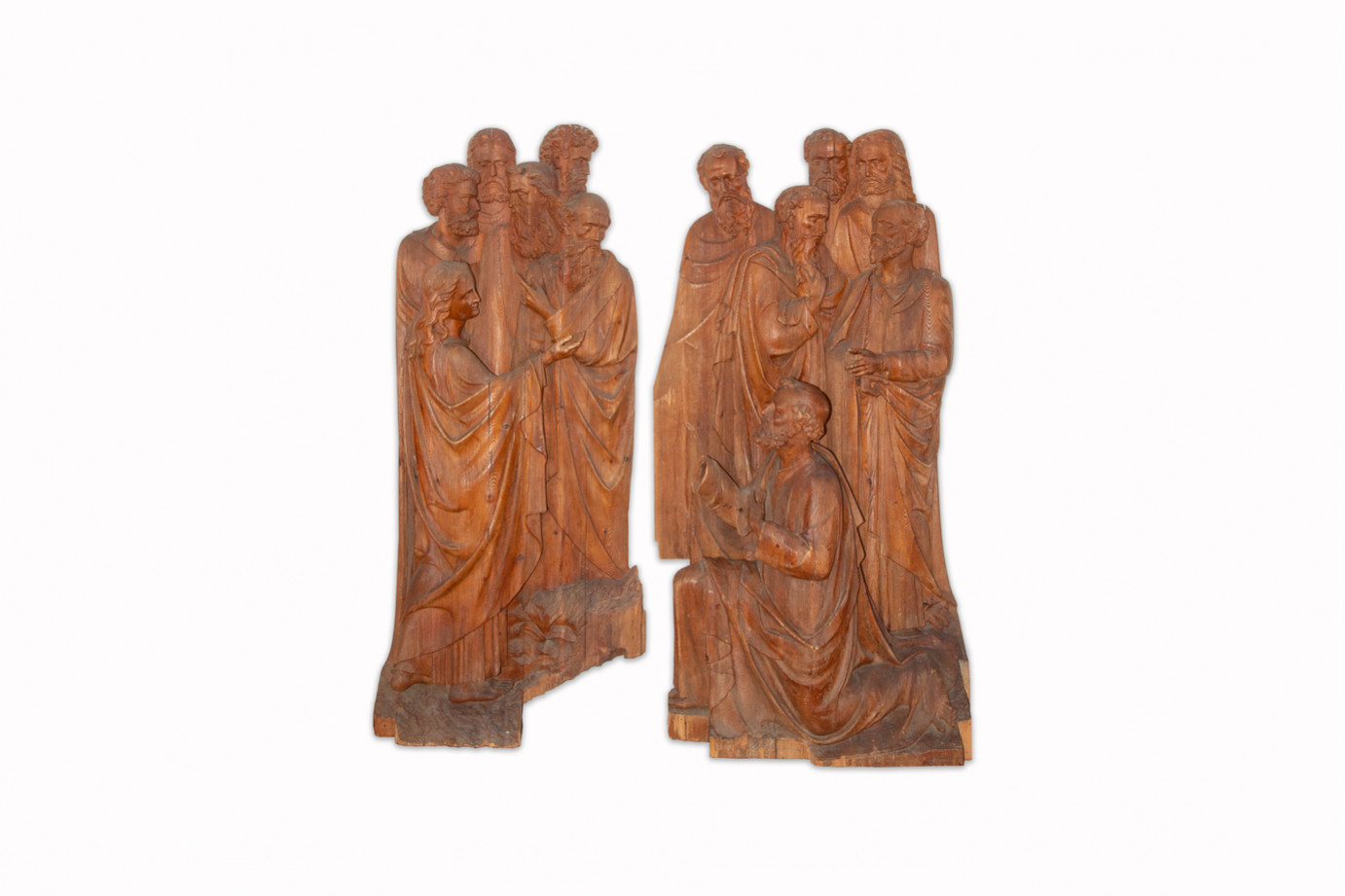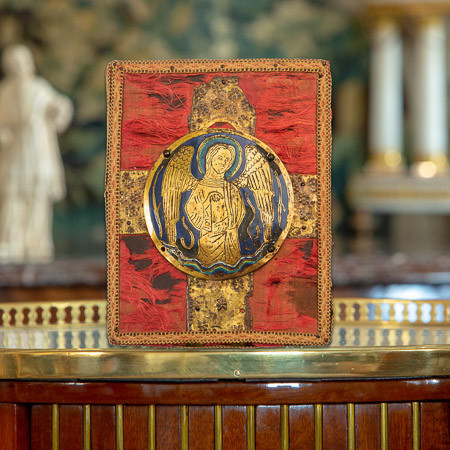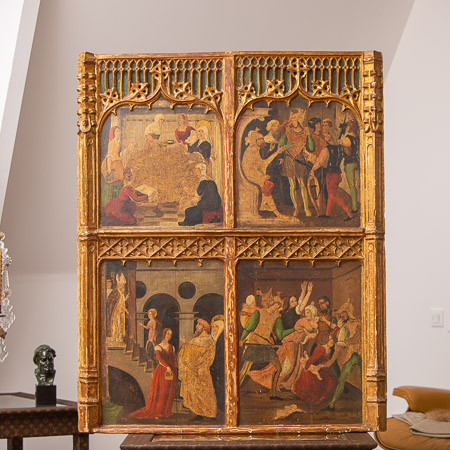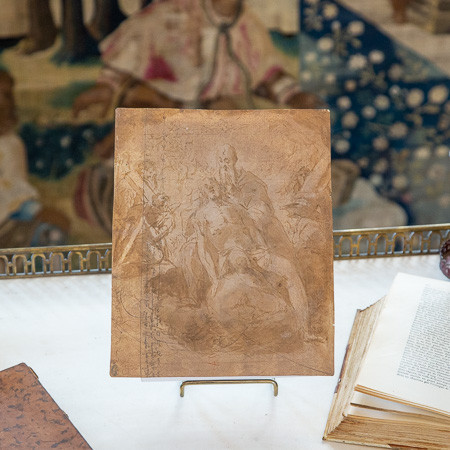About
This sculpted altarpiece representing the handing over of the keys to Saint-Pierre comes from the Northern Italy of the first half of the 15th century, not attached to a workshop or an artist of the Quattrocento. The solid pine artwork consists of two sculpted groups 200 cm wide by 210 cm high and a missing Christ in the centre. In full size, its maximum dimensions had to be 5 to 7 meters wide. A certificate of authenticity from Ms. Laurence Fligny, expert to the Court of appeal of Paris, dated December 18, 2020, will be given to the purchaser.
This early work reveals the intellectual and aesthetic changes of the Quattrocento with the persistence of the Christian spirit while returning to Greek and Roman Antiquity and turning to Man.
The scene illustrates an excerpt from the Gospel according to Saint Matthew (16,13-20). Jesus gives power to his first vicar. Man now has the keys to the Kingdom of Heaven to access his knowledge. This passage will be made famous thanks to the fresco in the Sistine Chapel by Le Perugino (1481-1482). It conveys a rich humanist symbolism. The painting by Perugino and the altarpiece opt for distribution in two equal groups on each side of Christ. Even if there is an overall harmony, the composition of the triangle altarpiece remains fairly hard-line. The group gains symmetry: the same number of characters on each side; all are looking at Christ, except for one person in each group. The apostles are represented without attributes; none can be identified with certainty apart from Saint-Pierre and Saint-Jean. These features underline the interest in Man, each of whom can relate to the symbolism of the depicted scene.
The features of the sculpture are close to a bas-relief. The finger of the rightmost apostle pointing towards the viewer and the highlighted foreshortening of the modeling give the impression of depth. The drapes let the movements be seen through and convey softness. The attention focuses on Man through the delicacy of the features, the hands and the hair. The Communion of the Apostles (1506), preserved in the Pinacoteca Civica de Forli, has the same characteristics: Marco Palmezzano plays with the same rigidity of composition counterbalanced by the great delicacy of the lines and the suggested movement. The apostles are also devoid of attributes. These particular features testify to a constant aesthetic and intellectual concern specific to the First Renaissance.
The right-hand side group is behind kneeling Saint-Pierre. With his missing right hand, he holds the keys of the Kingdom of Heaven, a symbol of the power conferred on him by Christ. The left group is behind Saint-Jean. Its resemblance to the Incrédulità di San Tommaso, a statue made by Andrea del Verrocchio between 1467 and 1483 (Orsanmichele Museum), is remarkable. This bronze shows the apostle Thomas checking the stigmata of Christ. In addition to the similarity of the two apostles, we find the same gentleness coming from the character. However, the later work of Verrocchio results in a higher finesse of features, expressions and gestures.
In this altarpiece, as in later works having similar points, everything focuses on Man rather than on the religious theme. The delicacy of the lines and the suggestion of the movements express the idea dear to the Quattrocento. The visible translate the invisible, and the body movements reflect those of the soul.

Characteristics
- Year: 1400/1450
- Origin: Italy
- Material or technique: Scots pine
- Sizes: 400 x 210 cm (Width x Height)




